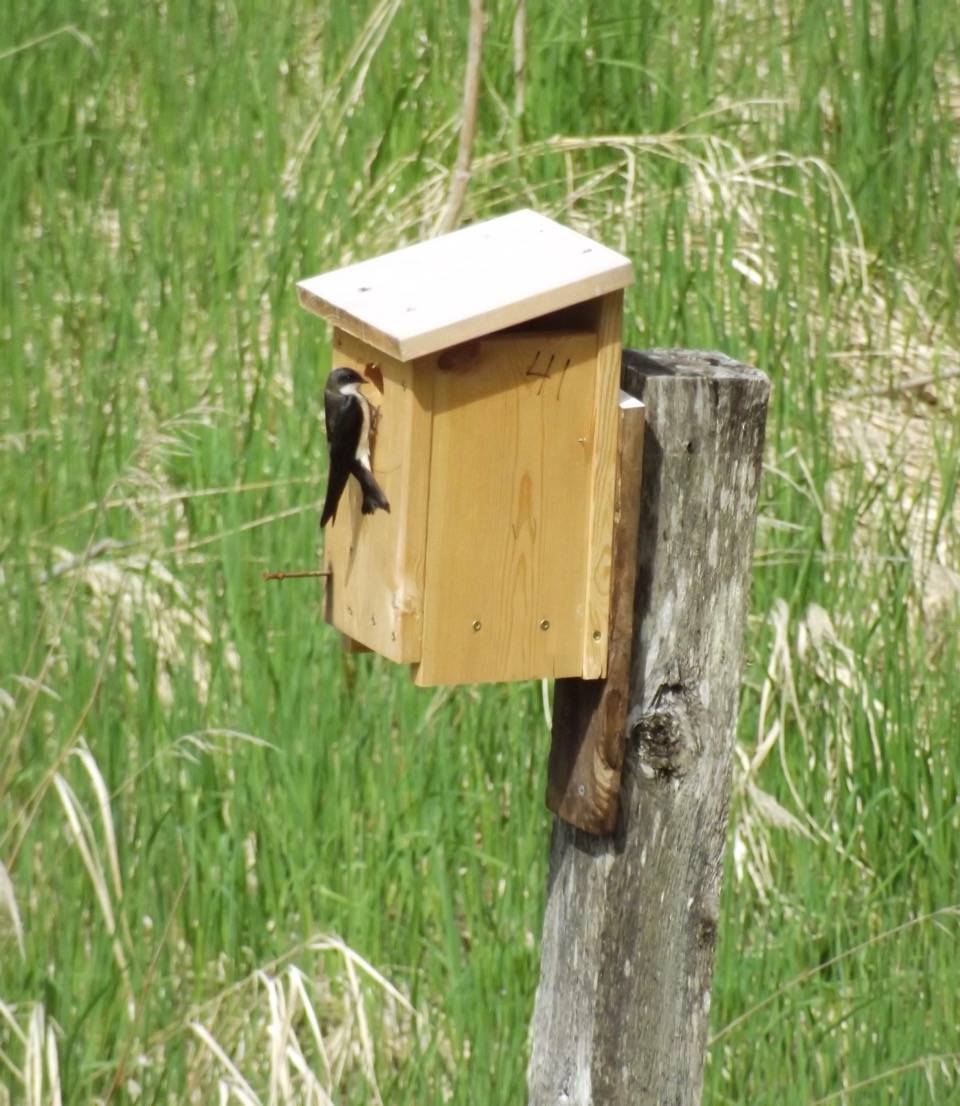The Juneau Audubon Society recently wrapped up its third year of studying local swallow populations. Next year, members hope to elevate the project’s scientific scope by linking it with a University of Fairbanks study and, locally, gathering a more consistent data set from year to year.
The Audubon Society studies the small birds, of which there are five species in Juneau, using 72 nesting boxes set in five sites around the city.
North American swallow populations have declined by 49 percent between 1966 and 2014, project lead Brenda Wright explained at a recent talk given to the society titled “Where have all the swallows gone?”.
“Not knowing what the cause for the sharp decline is, we wanted to do something to make it a little easier for them to live in Juneau,” Wright said.
In those 72 boxes, the Audubon Society counted 27 nests and 17 unhatched eggs this spring and summer. They also found 12 dead hatchlings. Those numbers are up from last year when 15 nests, four unhatched eggs and two dead hatchlings were found in 40 boxes.
Swallows were first observed using the boxes in mid-April. Eggs were observed by the first of May.
Barn swallows, cliff swallows, bank swallows, violet green swallows and tree swallows can all be seen in the Juneau area in the summer months. They’re known for their flashy colors and elegant flight.
Wright says they’re especially active around the Mendenhall Valley McDonald’s and by Home Depot. The society’s Sunny Point nesting boxes were the most popular with the birds this year.
Tree swallows have been particularly affected by climate change and human activity.
Natural cavities on caves and mountainsides, where most tree swallows build their nests, have been disappearing in the last 200 years as humans clear and log land.
As spring temperatures have warmed since the 1960s, the average date on which tree swallows lay their first egg has moved nine days earlier in the year.
To understand the impact climate change is having on swallow populations, the Juneau Audubon Society hopes next year to use its nesting project in conjunction with University of Alaska Fairbanks study.
This summer, they sent member Theresa Svencara to work with researchers at Creamer’s Field Migration Station, where UAF’s Swallow Ecology Project monitors around 200 nesting boxes.
Svencara learned how to measure and track swallows’ age and physical data. The information provides a window into changes in bird populations in interior Alaska.
Svencara said the work will help move the society’s work from “citizen science to science” by aggregating it with data from seven other Alaska monitoring sites at Fairbanks and Ester, Ruby, Quartz Lake, Bethel, Anchorage, McCarthy and Long Lake, and King Salmon and Naknek.
Juneau’s tree swallow nesting project would come online next year with new sites at Healy and Shagaluk.
• Contact reporter Kevin Gullufsen at 523-2228 or kevin.gullufsen@juneauempire.com.

